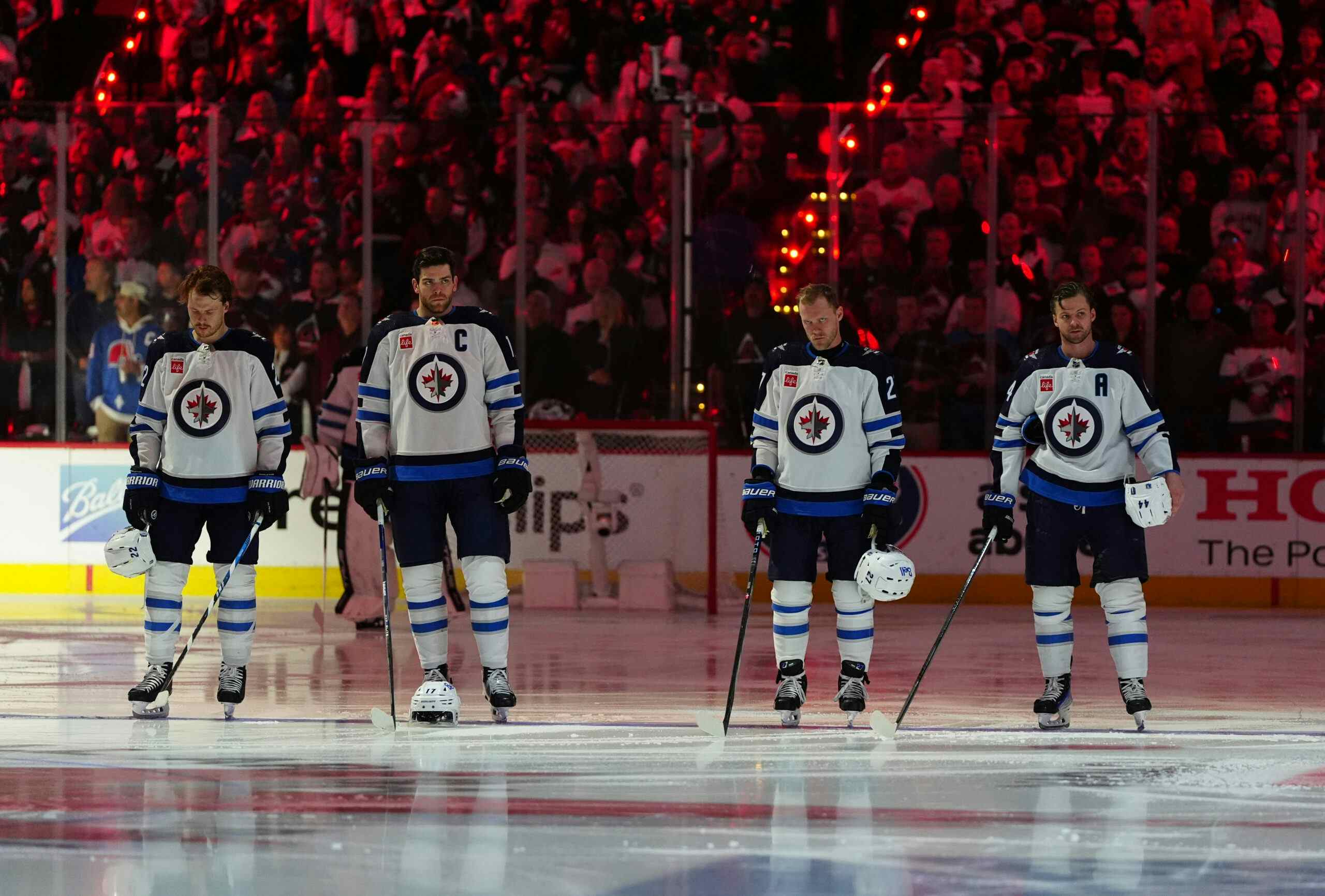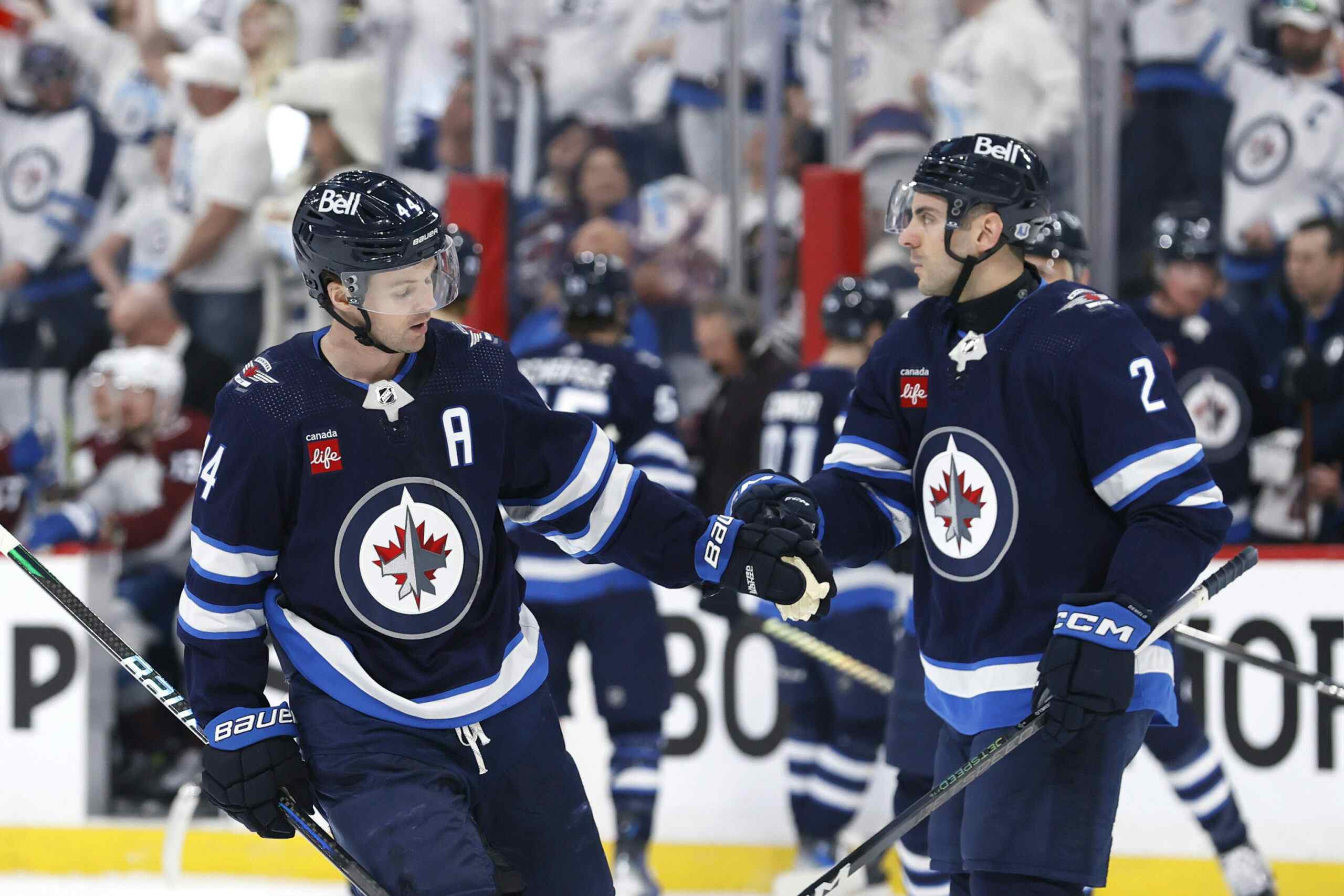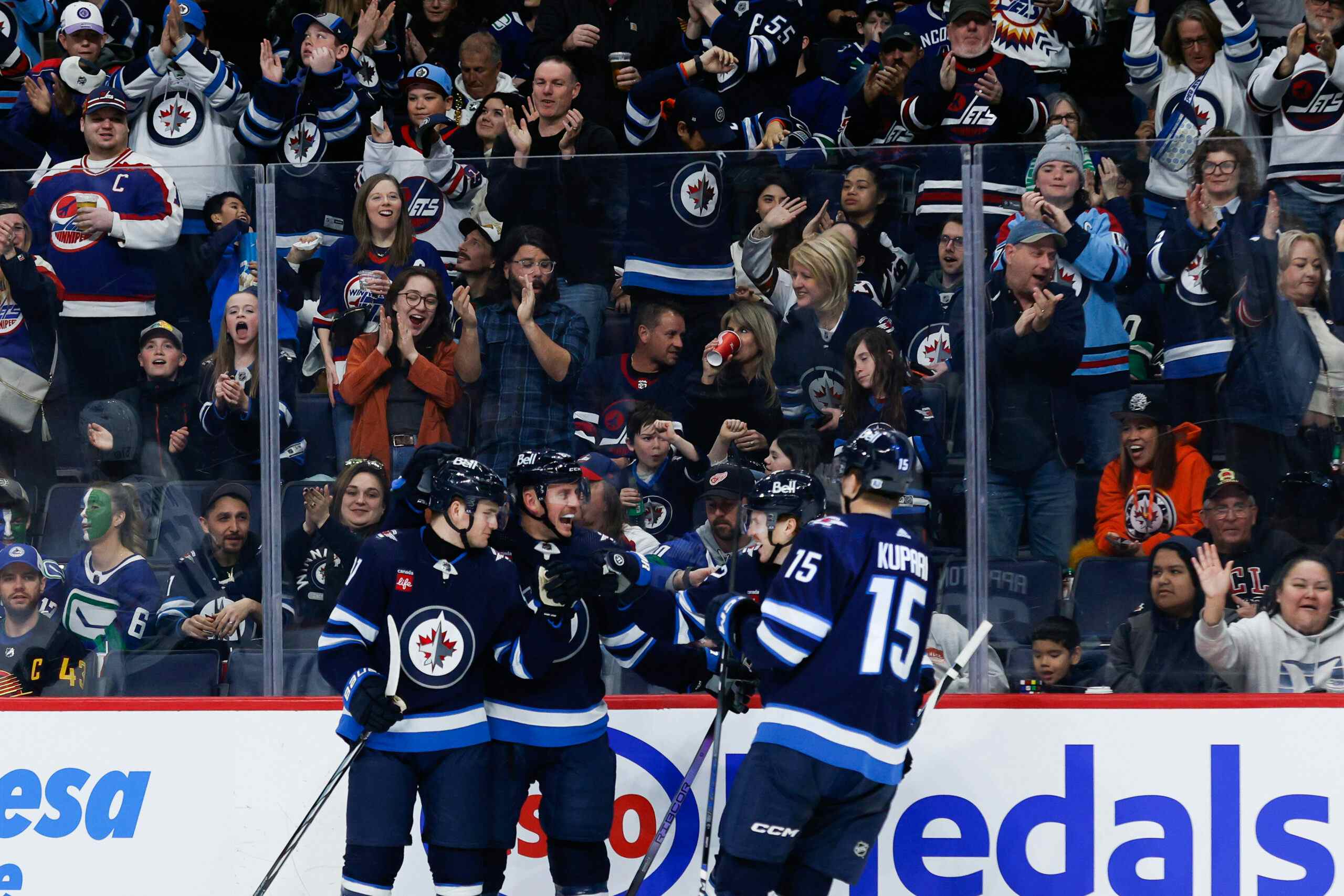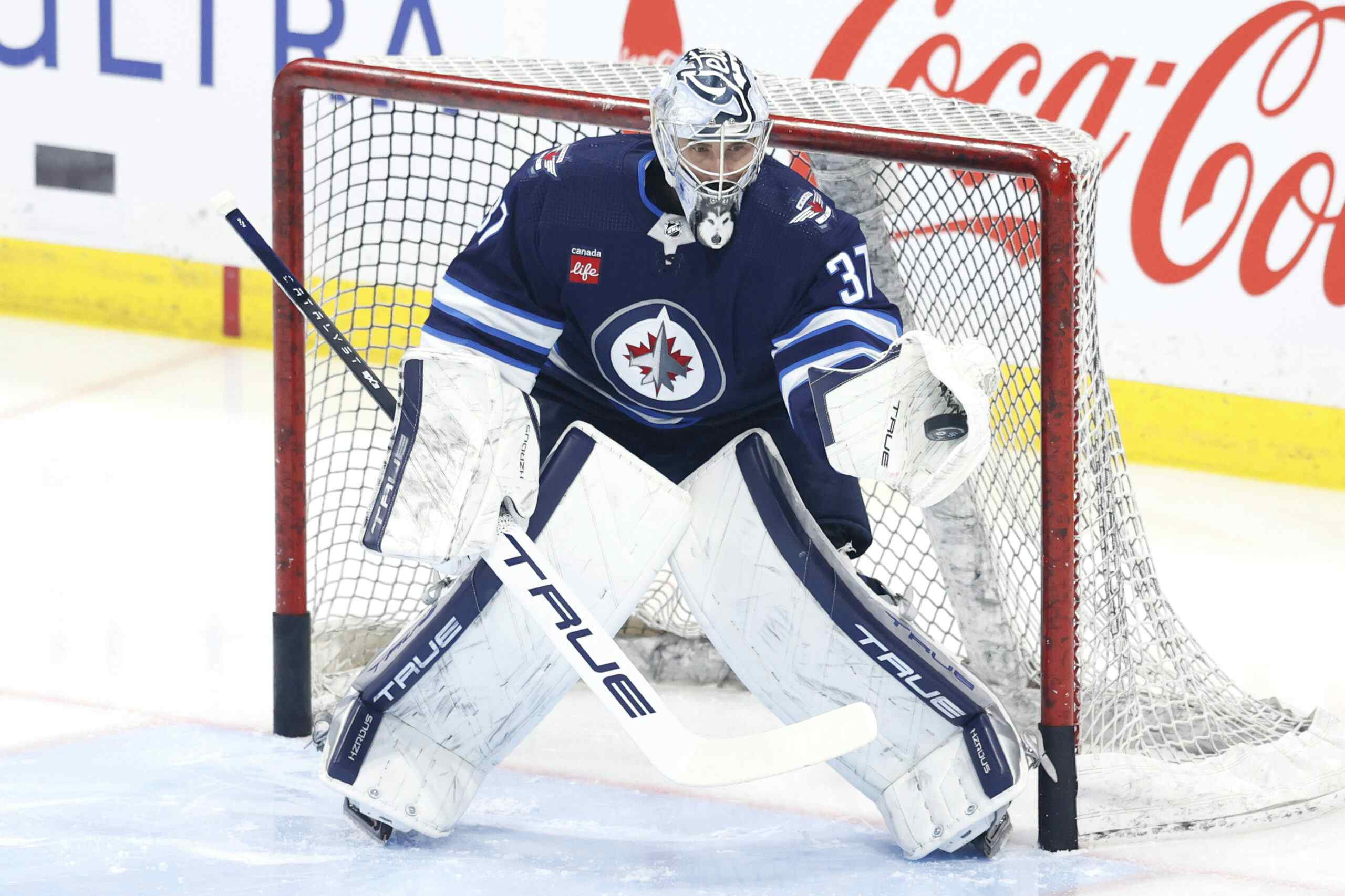Jets Trade Deadline 2016: Three (non-Ladd) players possibly on the block
By Garret Hohl
8 years agoThis week, we at Jets Nation hope to provide you with some of the best (and free) in-depth coverage of the Winnipeg Jets as the trade deadline date fast approaches us. We’ll take a look at what the Jets have done, could do, and should do, with all the reasoning why and why not.
We turn our series looking at three possible players on the trade block for the Winnipeg Jets, aside from the obvious Andrew Ladd candidate. Not necessarily who they should trade, but who they may trade or have other teams interested in.
1. Paul Postma

One player that could potentially be on the move is Paul Postma. While many may feel Postma has played well under his limited usage, it is clear that the Jets management and coaches have very little confidence in the defender despite that performance.
Postma has consistently outperformed the expectations of a seventh-round pick. Postma was drafted 205th overall by the Atlanta Thrashers in 2005 after scoring 24 points in 70 games in the WHL. The next year Postma nearly doubled his point production after being traded from Swift Current to Calgary, and followed up the next year with an impressive 1.2 point per game pace. In the AHL, the smooth-skating defender showed consistent progress, moving from 0.46, to 0.64, to 0.78 points per game paces.
Despite his impressive resume, Postma has struggled to hold on to a regular role in the NHL.
It’s a bit understandable, though, as he’s had to battle against one of the deepest right-hand shot defensive cores in the NHL. It would be tough for most depth defenders to gain ground on Dustin Byfuglien, Jacob Trouba, Tyler Myers, and Zach Bogosian. But, the Jets still refused to use Postma even after moving Trouba to the left side, choosing to dress struggling sophomore Ben Chiarot on his off-hand side instead.
There may be a market for Postma, even if it is small.
He has a history of solid performance at lower levels and has a very small sample in the NHL. Postma has one more year on his contract at a very reasonable $887 500, and any extension would likely require very little in salary raise.
While his 104 game NHL sample spread over six seasons may cause some skepticism, the Jets have performed adequately with him on the ice. The Jets have controlled 52.25 per cent of all shots (goals, saves, misses, blocks) with Postma on the ice, and only 51.42 while he is on the bench. Looking at scoring chances by removing perimeter shots we see almost no change, with the Jets controlling 52.38 per cent with Postma on the ice and only 51.24 per cent with him on the bench.
Postma is flawed, like all depth defensemen; however, a team might as well have one that mitigates the bleeding more than other more heavily flawed depth defenders. It’s not even like goals paint Postma in a different shade of a light, despite the small sample: the Jets control of goals is 2.26 percentage points better with Postma on the bench, but that is less of a drop than the 3.90 points or 10.76 points for Stuart and Chiarot.
Postma has struggled to score at the NHL level, but he hasn’t been given much opportunity on the power play and has a history of being an above average power play option at lower levels.
Honestly, Kevin Cheveldayoff should really look at removing Mark Stuart’s waste of salary over the summer instead, but the Jets are unlikely to do so… because of this we may see Postma on the block with his value perhaps being more to another team than it is to the Jets.
2. Jacob Trouba

Another player potentially on the trading block is Jacob Trouba. It’s not often you hear about a young, stud-defender being on sale in his third year. There is talk though that the Jets may not be able to afford the salary of Byfuglien, Myers, Trouba, and Enstrom combined, especially at the asking price Trouba is supposedly looking for.
Another reason why there has been talk about trading Trouba is some confusion on the right-handed defender’s development. There have been many who have felt that the young blue-liner has begun to stagnate and that his development seems to be flatlining.
A large part of this likely has to do with confusion between performance relative to usage and deployment. Above we see Trouba’s regressed performance in his rookie versus the current season. You may notice that his assist production has fallen, but quite a few of his other numbers have improved.
Trouba has been mainly deployed under a defensive role playing with the Jets knuckle-dragging fourth line and Mark Stuart on his left. It’s understandable why he has struggled to put up strong assist numbers. He has however improved in his ability to make his linemates out shoot and outscore his opponents, which is a more important facet to the game than Trouba’s assist totals.
In addition, Trouba’s power play time has dwindled with the addition of Tyler Myers, despite numbers suggesting Trouba is the superior power play option, and the Jets increasing usage of a four-forward power play unit.
I also want to point out something about the WARRIOR and similar charts: as you move towards more elite players, the gaps in talent extend. In other words, the better you are, the more it takes to surpass the next best player and expand your bar in the chart. A comparable example is point totals: a player who moves from 15 points to 20 points will pass more players than a player jumping from 45 to 50.
So, we have this player, at 21, who was playing like a 2nd pair defender, and now is playing more like a top pair defender, and people are worried about his performance stagnating. It’s hard not to look like you’re peaking when there isn’t much higher realistically to go given your usage unless you move into the elite range, which would be nice but also very difficult and not very realistic to expect upon someone.
The real question is: can the Jets afford a defensive core that takes up as much room as the big four? Giving the cap only a very minimal room to grow over the combined next two seasons (if at all) the Jets will likely be using more of their budget on defense than any team to win the Stanley Cup since the Detroit Red Wings last lifted the trophy.
It’s possible, but the Jets will have to be very efficient outside of their defense to make up for the expenses there. If they do not think they can, they will have to remove one of the big four for relief.
3. Tobias Enstrom

Speaking of relief, there is another option aside from Trouba (well there is two if you include Tyler Myers but the Jets may be too attracted to Myers salary structure): Toby Enstrom.
Enstrom is often underrated by fans due to not filling the prototypical defender mould, but he still gets results. He is not getting younger, and his productivity has begun to falter. There is some evidence though that Enstrom’s falling results may come from consistently carrying weaker defenders lately like Bogosian and Myers.
Either way, Enstrom is still useful, especially defensively in preventing shots and goals against. Whether in a strict defensive role or support an elite shot producer (hint hint: Trouba or Byfuglien), Enstrom has value in being able to help out a team needing to reduce their goals against. As they say: defense wins championships.
Enstrom has two full seasons at 5.75 AAV, so his services do not come cheap. Enstrom also carries a full movement clause which means Enstrom ultimately controls his own destiny.
The Jets also lack depth on the left side. The NHL team only carries Enstrom, Stuart, and Chiarot as natural left side defenders signed for next year. The Jets AHL team has Joshua Morrissey, but fails to provide any real potential depth after that. The prospect pool only has Sami Niku over in Europe playing on the left side.
While financial limitations may force the Jets’ hand, it may end up more difficult for the Jets to replace Enstrom than someone like Andrew Ladd.
Recent articles from Garret Hohl





